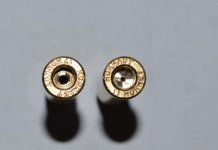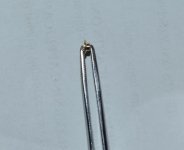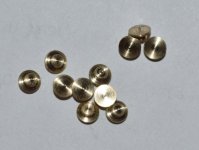B
bluechip
Guest
I'm currently trying an experiment with a .17 hornet. I noticed my 6mm ppc Lapua cases (actually 220 Russian) had a smaller flash hole (.062") than my .17 hornet (.079") even though the hornet has one third the powder charge and they both use the same primer. I am reaming the flash holes and inserting brass bushings that are then drilled to a smaller size. A simple straight bushing, after firing, is oddly gone from the flash hole and seems to be vaporized, even though it is a very tight press. The new concept is shown in the pictures where a brass insert is pressed in with a tapered head like a flat head screw, into a case that has been machined to the same dimensions. The hornet has a flash hole that is .079 and I'll be trying .055 and .035 in the near future and will post results. It looks like the best way to go would be acquire cases that weren't drilled, just blank.







